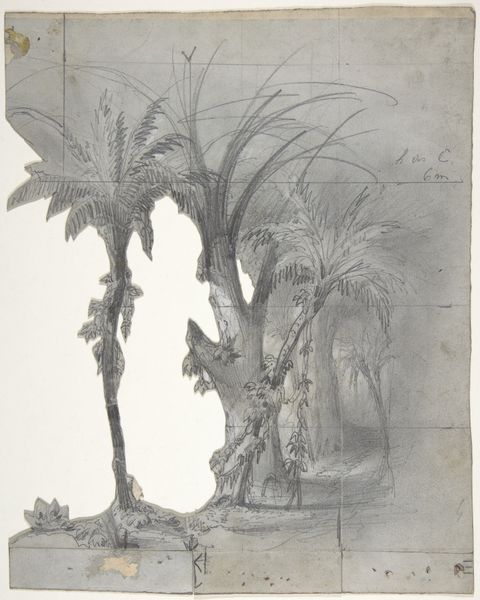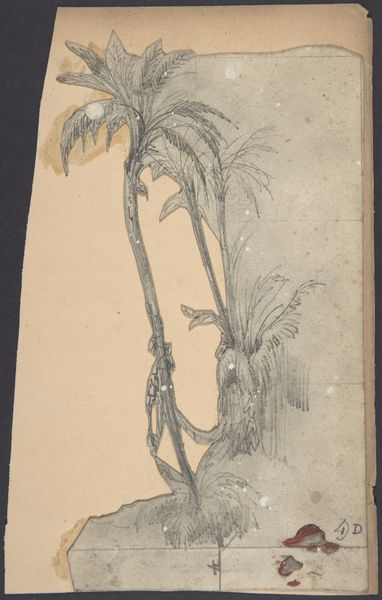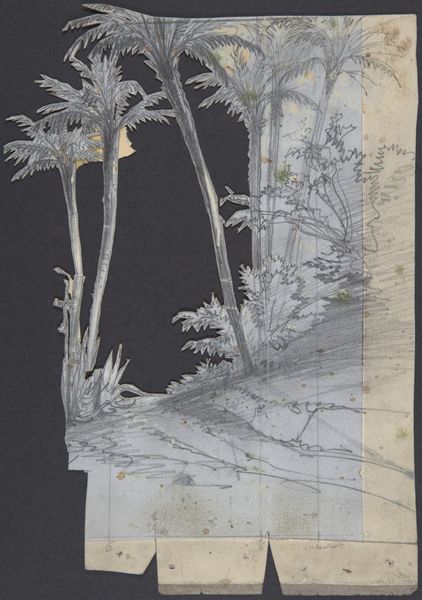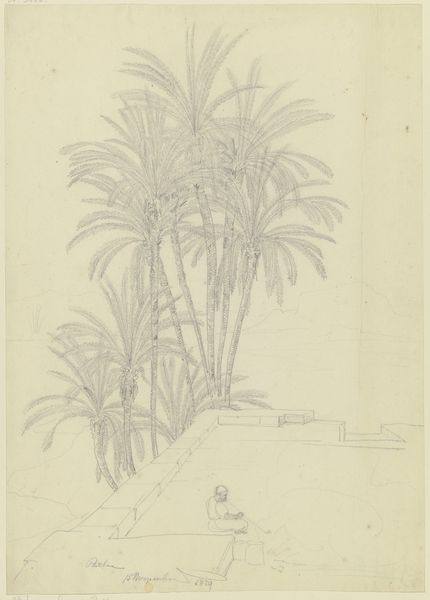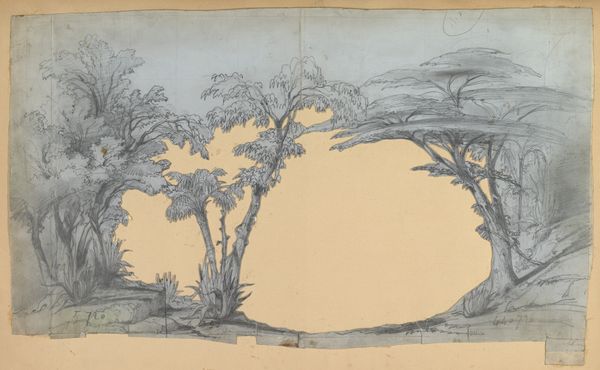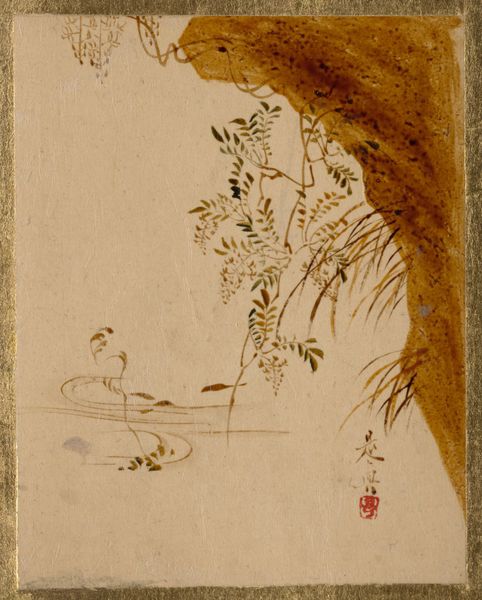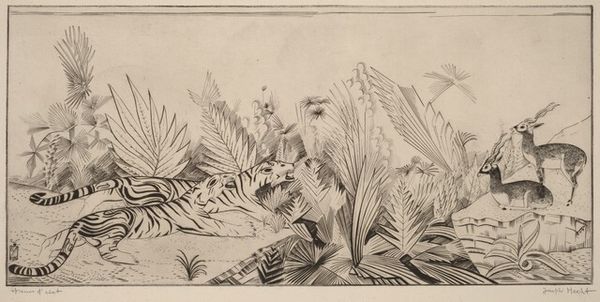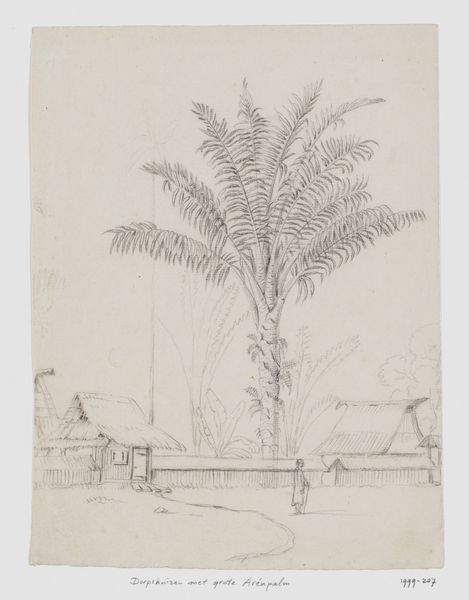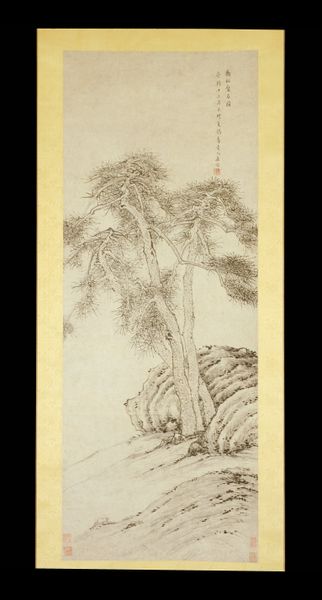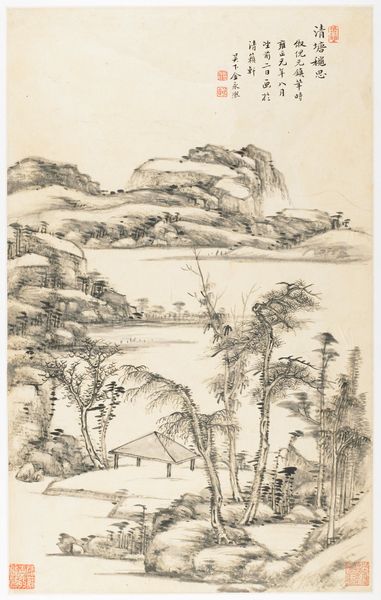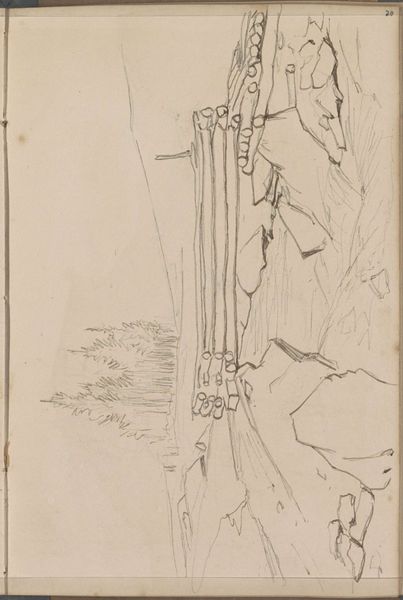
Design for a Stage Set at the Opéra, Paris 1830 - 1890
0:00
0:00
drawing, print, ink
#
drawing
# print
#
landscape
#
ink
Dimensions: Irregular sheet: 11 5/16 x 8 5/8 in. (28.7 x 21.9 cm)
Copyright: Public Domain
Curator: Eugène Cicéri's "Design for a Stage Set at the Opéra, Paris," dating from 1830 to 1890, presents us with a glimpse into the world of 19th-century theatrical design through the mediums of ink drawing and print. Editor: It has a strikingly wistful mood, don't you think? A grayscale symphony with the faintest blush of warmth on the background—almost sepia, with its strong vertical lines fighting with this very, very textured but limited plane. It also makes me think of loneliness. Curator: The strategic application of verticality is what first commands my attention. The arrow extending to the top border and those elegant palm fronds... They elongate the plane, lending a false and somewhat illusory dimension to this very still scene. Editor: To me, the plants evoke Eden, that paradise lost or a fevered dream. These botanical symbols can transport the audience beyond the urban environment. What feelings of colonial expansion do these symbols contain within them? Curator: A fascinating point. But note how the structure is built on balance, yet asymmetry reigns—how the foliage droops on one side while other portions push straight toward that aforementioned arrow. There's a constant push-pull at work between formal ideals and representational concerns. Editor: It is the eternal desire to reach an unrecoverable ideal, a nostalgic and mournful one. Perhaps a reminder that we, like these exotic species displaced onto the Parisian stage, exist outside of our "natural" setting? Curator: That tension gives the whole piece its vitality! See how those grid lines both define the pictorial space and conflict with the free, organic forms. It underscores a dialogue between control and expression that propels this piece. Editor: Perhaps this artwork’s lasting power lives less in the exact rendering but in its symbolic representation—longing. It encourages introspection of ourselves, these icons, and their position within society. Curator: An excellent way to think of this—Cicéri challenges the boundaries between precision and fluidity and opens up our perspective through the visual language of tension. Editor: I'll be haunted for days by how such simplicity may be able to hide all the depth held within that carefully drawn composition.
Comments
No comments
Be the first to comment and join the conversation on the ultimate creative platform.
